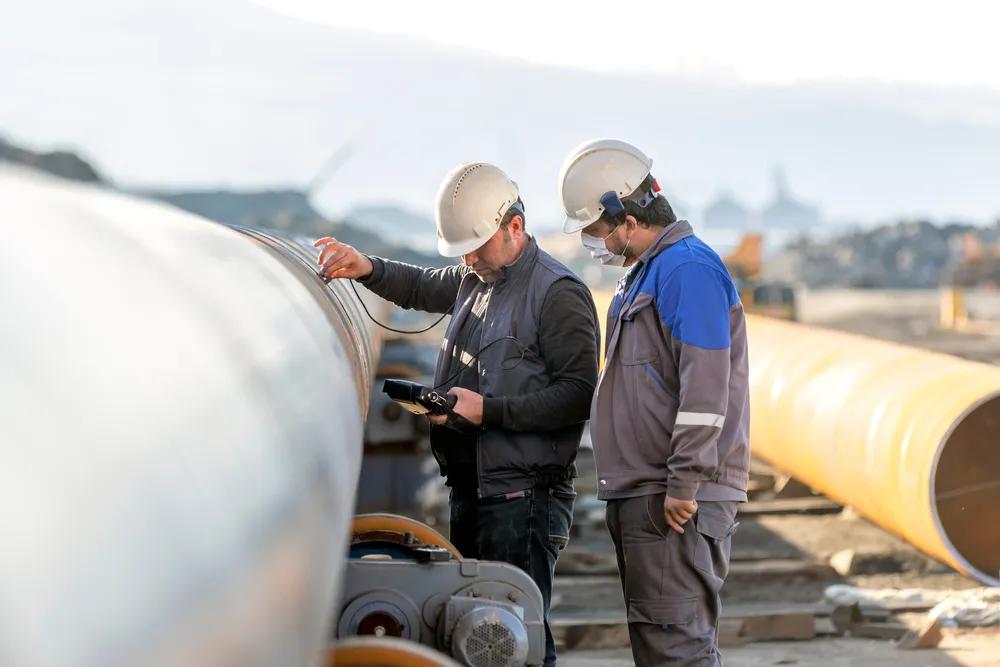Maintenance and Troubleshooting of Loading Arm Types Course
Introduction:
The Maintenance and Troubleshooting of Loading Arm Types course is aimed at enhancing the practices of professionals regarding loading arm maintenance, inspection, and related protective enhancement procedures. Participants will learn about loading chemical solutions that are less wasteful, more durable, safer, and more flexible.
Proper maintenance policies are essential to ensure the effective use of loading arm systems, particularly in the loading and unloading of petroleum liquids. This course will help participants understand specific remedial measures, both conceptual and practical, to operate and maintain a loading arm, thereby reducing breakages and financial losses during petroleum product transfer processes.
As a result of this training, participants will perform full maintenance of loading arms equipped with the skills to identify and rectify common issues that could hinder loading operations in the oil and gas sector.
Objectives:
At the end of the Maintenance and Troubleshooting of Loading Arm Types course, participants will be able to:
- Be conversant with different categories of loading arms, such as marine loading arms, and their uses in the oil and gas industry.
- Prepare, pressure-test, and safely connect hoses, couplings, loading arms, and vapor return lines for future use.
- Appreciate the loads and forces present on the manifold and the vessel during transfer operations with oil-loading arms.
- Understand the role of various marine quick connect and disconnect couplings in front-end loading in the oil and gas sector.
- Know the emergency release systems for marine terminals to enhance safety measures in the working environment.
- Apply practical care and maintenance to loading arms, couplings, and emergency release systems for longer service life and reliability.
- Understand the operation of inert gas systems and their importance in safety within the oil and gas industry.
- Develop procedures to contain sea pollution as per the provisions of MARPOL 73/78 and associated ordinances as amended.
Training Methodology:
- Live demonstrations
- Group work with idea sharing
- Case studies of field studies
- Technical presentations (e.g., PowerPoint)
- Field studies for practical experience
- Q&A sessions
- Exercises to demonstrate understanding of the topic
- Feedback and reflection on activities undergone
Course Outline:
Unit 1: Introduction to Loading Arms in Oil & Gas
- General information on loading arm systems in the oil and gas industry
- Operational classification of arms (marine arms, truck arms, rail arms, pipeline arms)
- Essential parts of the arms and their operations
- Codes and policies governing loading arm operations
- The need for consistent maintenance to avert operational breakdowns
Unit 2: Maintenance Procedures for Loading Arms
- Regular inspection and maintenance
- Care for moving parts (lubrication and cleaning)
- Finding and replacing worn parts
- Step-by-step labor for hydraulic system care
- Care and rectification of electrical systems
- Proper handling and maintenance of swivel joints and seals
- Records and reports of maintenance work
Unit 3: Troubleshooting Common Loading Arm Issues
- Common defects in loading arms
- Simple repairs of loading arm hydraulic systems
- Troubleshooting electrical problems related to loading arms
- Consequences of hardware abrasion
- Repair of swollen heads and couplers
- Procedures to follow during emergency shutdowns
- Supplies needed for effective troubleshooting
Unit 4: Advanced Diagnostic Techniques
- Diagnostic approaches to ascertain the condition of a loading arm
- Inspection techniques for structural characteristics (non-destructive)
- Detection of early signs of problems through vibration analysis
- Pressure and flow testing of hydraulic systems
- Electrical diagnostics using multimeters
- State-of-the-art sensor technology for real-time alerts
- Processing diagnostic data to prepare maintenance schedules
Unit 5: Safety Considerations in Maintenance and Troubleshooting
- Risks associated with loading arms requiring precautionary measures
- Protective equipment for maintenance work
- Working practices for hazardous materials during maintenance
- Emergency procedures for loading arm incidents
- Lockout/tagout procedures during troubleshooting
- Pollution prevention measures during maintenance activities


















